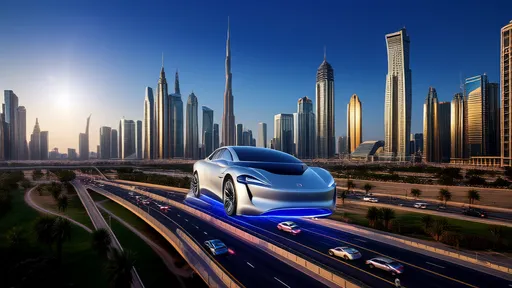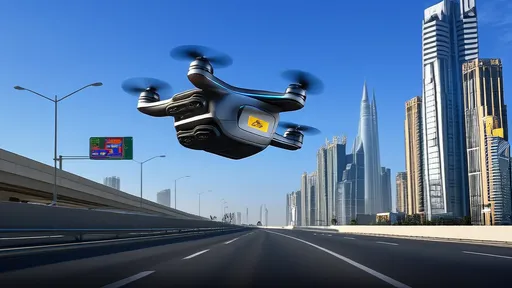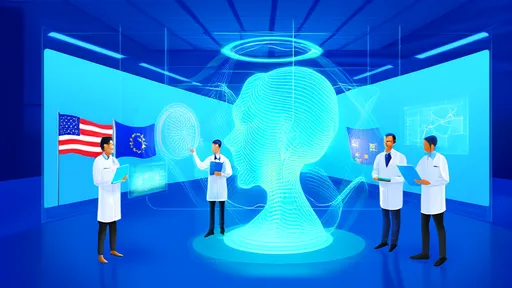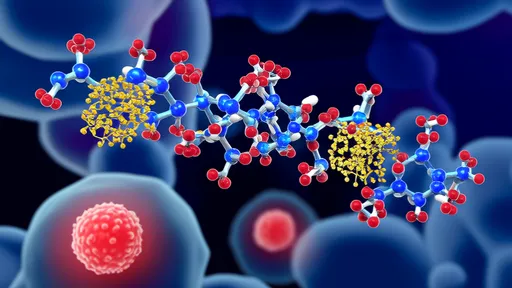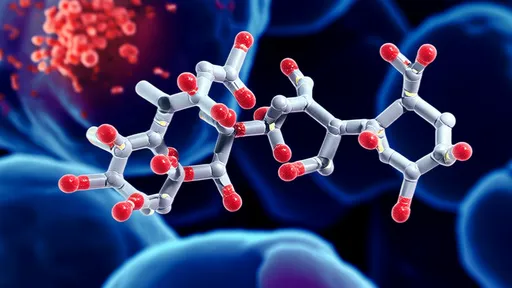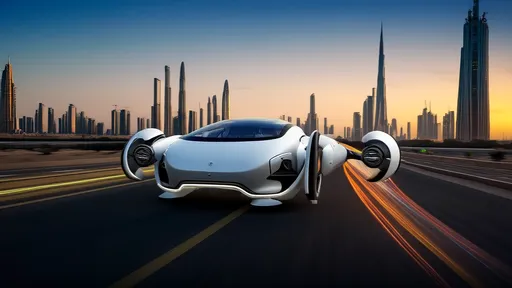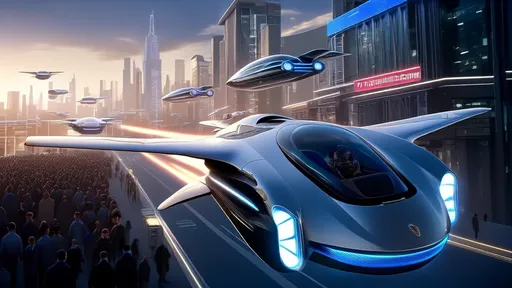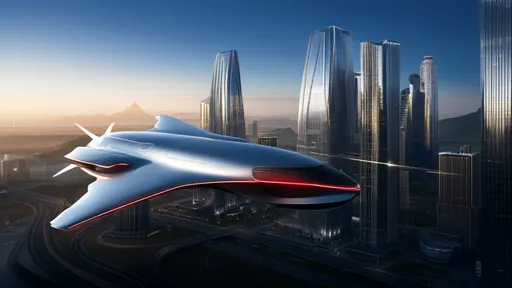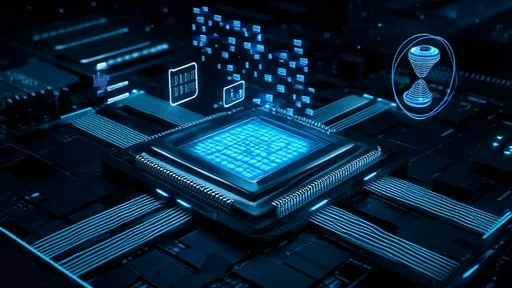The landscape of oncology treatment is undergoing a profound transformation, driven by the emergence of third-generation antibody-drug conjugates (ADCs). These sophisticated therapeutic agents represent a significant leap forward in the quest for precision medicine, offering new hope for patients battling various forms of cancer. Unlike conventional chemotherapy that attacks both healthy and cancerous cells indiscriminately, these advanced biologics deliver potent cytotoxic agents directly to tumor cells, minimizing damage to healthy tissues and reducing debilitating side effects.
The evolution from first-generation to third-generation ADCs marks a revolutionary journey in pharmaceutical innovation. Early ADCs faced numerous challenges including unstable linkers, inadequate target specificity, and limited payload potency. The current generation addresses these limitations through groundbreaking advancements in antibody engineering, linker technology, and warhead development. Researchers have developed more stable conjugation methods that prevent premature drug release in circulation while ensuring efficient payload delivery upon internalization by cancer cells.
Modern ADC development leverages cutting-edge antibody engineering techniques that enable the creation of highly specific monoclonal antibodies with enhanced binding affinity. These antibodies are designed to recognize tumor-associated antigens with exceptional precision, significantly improving target selectivity. The humanization of these antibodies reduces immunogenicity, allowing for repeated administration without triggering significant immune responses. Furthermore, advances in protein engineering have enabled the development of antibodies with optimized pharmacokinetic properties, extending their circulation half-life and enhancing tumor penetration.
The sophistication of linker technology represents another critical advancement in third-generation ADCs. Contemporary linkers demonstrate remarkable stability in systemic circulation while maintaining sensitivity to specific triggers within the tumor microenvironment. These intelligent linkers can be designed to respond to various intracellular conditions such as pH changes, enzymatic activity, or redox potential differences. This controlled release mechanism ensures that the cytotoxic payload remains inactive during transit and becomes activated only upon reaching the intended target, thereby maximizing therapeutic efficacy while minimizing off-target effects.
Payload innovation has been equally transformative in the development of advanced ADCs. Researchers have expanded beyond traditional chemotherapeutic agents to include novel cytotoxic compounds with unprecedented potency. These next-generation warheads include DNA-damaging agents, microtubule inhibitors, and topoisomerase inhibitors specifically engineered for ADC applications. The enhanced potency allows for effective tumor cell killing even with limited drug internalization, addressing the heterogeneity of antigen expression often observed in solid tumors.
The clinical impact of third-generation ADCs is already becoming evident across multiple cancer types. In HER2-positive breast cancer, newer ADCs have demonstrated superior efficacy compared to earlier generations, with improved response rates and progression-free survival. Similarly, in hematological malignancies, targeted ADCs have shown remarkable activity in patients who have exhausted conventional treatment options. The ability of these agents to overcome resistance mechanisms that typically develop against traditional therapies represents a significant breakthrough in cancer management.
Combination strategies represent the next frontier in ADC therapeutics. Researchers are increasingly exploring synergistic approaches that combine ADCs with other treatment modalities such as immunotherapy, targeted therapy, and radiation. These combinations aim to enhance antitumor activity through multiple mechanisms of action while potentially overcoming resistance. Early clinical data suggests that ADC-immunotherapy combinations can stimulate robust immune responses against tumors, creating a more comprehensive attack on cancer cells.
The development of novel targeting strategies continues to expand the therapeutic potential of ADCs. Beyond targeting single antigens, researchers are engineering bispecific antibodies that can recognize two different tumor-associated antigens simultaneously. This approach increases target specificity while reducing the likelihood of antigen escape, a common mechanism of treatment resistance. Additionally, the exploration of new tumor targets across various cancer types is rapidly expanding the clinical applications of ADC technology.
Manufacturing advancements have played a crucial role in the successful development of third-generation ADCs. Improved conjugation techniques now allow for more homogeneous drug-antibody ratios, resulting in products with consistent pharmacological properties. The implementation of quality-by-design principles and advanced analytical methods ensures robust manufacturing processes that meet rigorous regulatory standards. These manufacturing innovations have addressed previous challenges related to product heterogeneity and batch-to-batch variability.
The regulatory landscape has evolved to accommodate the unique characteristics of ADCs, with health authorities developing specific guidelines for their development and approval. The accelerated approval pathways for breakthrough therapies have facilitated faster access to promising ADC treatments for patients with limited options. Post-marketing surveillance and real-world evidence collection continue to provide valuable insights into the long-term safety and effectiveness of these novel therapeutics.
Despite the remarkable progress, challenges remain in optimizing ADC therapy. Issues such as target antigen heterogeneity, inadequate tumor penetration, and the development of resistance mechanisms require ongoing research. The scientific community continues to investigate strategies to enhance ADC delivery to solid tumors, improve payload release kinetics, and identify predictive biomarkers for patient selection. These efforts aim to maximize the therapeutic index of ADCs while minimizing toxicity.
The economic considerations of ADC development and accessibility represent another important aspect of their implementation. While these targeted therapies offer significant clinical benefits, their development costs and pricing structures present challenges for healthcare systems worldwide. Ongoing discussions focus on value-based pricing models and strategies to ensure equitable access to these innovative treatments across different populations and healthcare settings.
The future of ADC technology holds even greater promise with several innovative approaches in development. Next-generation platforms include conditionally active biologics, pro-drug activated systems, and antibody fragments with enhanced tissue penetration properties. The integration of artificial intelligence and machine learning in ADC design is accelerating the identification of optimal target combinations and predictive biomarkers. These technological advancements are expected to further refine the precision and effectiveness of cancer treatment.
As research continues to unravel the complexities of cancer biology, ADCs are increasingly recognized as versatile platforms that can be tailored to address specific therapeutic needs. The modular nature of ADC design allows for continuous optimization of individual components, enabling rapid iteration and improvement based on clinical experience and emerging scientific insights. This adaptability positions ADCs as foundational elements in the evolving landscape of precision oncology.
The global collaboration among academic institutions, pharmaceutical companies, and regulatory agencies has been instrumental in advancing ADC technology. These partnerships facilitate knowledge sharing, resource pooling, and coordinated research efforts that accelerate innovation. The establishment of international consortia and research networks continues to drive progress in understanding ADC mechanisms and optimizing their clinical application.
Patient-centered approaches are becoming increasingly integrated into ADC development programs. The inclusion of patient-reported outcomes and quality-of-life measures in clinical trials provides valuable perspectives on the real-world impact of these treatments. This patient-focused approach ensures that new therapies not only demonstrate efficacy in clinical endpoints but also address the holistic needs of individuals living with cancer.
The educational initiatives surrounding ADC therapies have expanded to include healthcare professionals, patients, and caregivers. Comprehensive training programs ensure proper administration and management of these complex biologics, while patient education materials help individuals understand treatment expectations and potential side effects. These educational efforts contribute to the safe and effective implementation of ADC therapies in clinical practice.
As we look toward the future, third-generation ADCs continue to redefine the possibilities in cancer treatment. Their ability to deliver targeted cytotoxicity with precision represents a paradigm shift in therapeutic approach. The ongoing innovation in this field promises to yield even more sophisticated platforms that will further enhance our ability to combat cancer while preserving quality of life. The journey of ADC development exemplifies how scientific perseverance and technological innovation can converge to create transformative solutions for some of medicine's most challenging problems.
The once-fantastical vision of humanoid robots, long confined to the pages of science fiction and the silver screen, is steadily materializing into a tangible engineering reality. This evolution is not the result of a single, monumental breakthrough but rather a profound and intricate symphony of advancements across a multitude of scientific and engineering disciplines. The quest to create machines that not only look but also move, perceive, and interact with the fluidity and adaptability of humans represents one of the most ambitious technological endeavors of our time. It is a grand convergence, where progress in artificial intelligence, materials science, mechanical engineering, and cognitive science coalesces to breathe life into metal and silicon, pushing the boundaries of biomimicry to unprecedented heights.
The recent inclusion of humanoid robots in the 2025 Top Ten Global Engineering Achievements marks a watershed moment in technological history. This recognition transcends mere academic acknowledgment; it represents a collective global validation of decades of research, development, and iterative innovation in robotics. For years, humanoid robots existed primarily in the realms of science fiction and laboratory prototypes, often viewed as fascinating but distant curiosities. Their elevation to a top global engineering feat signals a profound shift—a transition from conceptual marvels to tangible agents of change poised to reshape our societal and industrial landscapes.
In a landmark recognition of human engineering prowess, China's full-ocean-depth manned submersible has been selected among the 2025 Top Ten Global Engineering Achievements, standing shoulder-to-shoulder with revolutionary projects like quantum computing infrastructure and Mars colonization prototypes. This prestigious listing, announced by the International Engineering Consortium earlier this morning, represents more than just technological acknowledgment—it signifies humanity's renewed commitment to conquering Earth's final frontier.
In the heart of Dubai's morning rush hour, the familiar gridlock of Sheikh Zayed Road stretches for kilometers below, but above the shimmering asphalt, a new dimension of transportation is quietly rewriting the rules of urban mobility. As first reported by The Times of India, the city's ambitious flying car initiative has transitioned from futuristic concept to operational reality, with commuters now gliding between skyscrapers in electric vertical take-off and landing vehicles. This isn't a scene from a science fiction film but the new daily reality for a growing number of Dubai residents who have traded their terrestrial commutes for the freedom of three-dimensional travel.
The desert skies of the United Arab Emirates, long dominated by the sleek silhouettes of commercial airliners and private jets, are poised to welcome a new kind of vessel. In a landmark decision that signals a significant leap from science fiction to tangible reality, a specific model of flying car has been granted a special certificate of flight from the UAE's civil aviation authority. This is not merely a provisional test permit for a closed course; it is a crucial regulatory nod that brings the vision of urban air mobility one giant step closer to the daily lives of the region's residents.
In a move signaling a new era of technological collaboration, Southeast Asian nations and the United States are forging a groundbreaking partnership in artificial intelligence development. This strategic alliance emerges at a critical juncture when global AI governance remains fragmented and the technology's potential to reshape economies and societies becomes increasingly apparent. The collaboration represents more than just technical cooperation—it embodies a shared vision for responsible innovation that respects cultural diversity while addressing common challenges.
The Euclid Space Telescope, humanity's newest and most ambitious eye on the cosmos, has begun its monumental mission to pierce the profound darkness that envelops our universe. Launched into the silence beyond our atmosphere, its purpose is not merely to capture stunning celestial portraits but to map the invisible architecture of reality itself. For decades, astronomers have known that the cosmos we see—the glittering tapestry of stars, galaxies, and nebulae—comprises a mere five percent of the total content of the universe. The remaining ninety-five percent is a profound mystery, a dual enigma composed of dark matter and dark energy. These are the phantoms of physics, entities that do not emit, absorb, or reflect light, yet whose gravitational influence dictates the fate of everything we hold visible. Euclid is our most sophisticated attempt to date to bring these shadows into the light, to understand the hidden forces that have shaped the universe's past and will determine its ultimate destiny.
Beijing's National Stadium, once the iconic centerpiece of the 2008 Summer Olympics, echoed with a different kind of applause this week. The thunderous cheers were not for human athletes pushing the limits of physical endurance, but for their mechanical counterparts—humanoid robots competing in the inaugural World Humanoid Robot Sports Games. The air, thick with the whirring of servos and the collective anticipation of engineers and spectators, marked a pivotal moment in the history of robotics and international sport.
The landscape of oncology treatment is undergoing a profound transformation, driven by the emergence of third-generation antibody-drug conjugates (ADCs). These sophisticated therapeutic agents represent a significant leap forward in the quest for precision medicine, offering new hope for patients battling various forms of cancer. Unlike conventional chemotherapy that attacks both healthy and cancerous cells indiscriminately, these advanced biologics deliver potent cytotoxic agents directly to tumor cells, minimizing damage to healthy tissues and reducing debilitating side effects.
In the relentless battle against cancer, a revolutionary class of therapeutics has emerged, earning the evocative moniker of "precision missiles" for their ability to deliver potent cytotoxic agents directly to malignant cells while sparing healthy tissue. These are Antibody-Drug Conjugates, or ADCs, and they represent a sophisticated fusion of biologic targeting and potent chemotherapy, a paradigm shift in oncology that is redefining treatment expectations for a growing number of cancers.
The desert skies above Dubai witnessed a historic moment last week as the sleek silhouette of a flying car cut through the cerulean blue, marking what many industry experts are calling the dawn of a new era in personal transportation. The demonstration, orchestrated by the pioneering aviation firm AeroMobil Emirates, was not merely a test flight; it was a powerful statement of intent, a tangible promise of a future once confined to the pages of science fiction.
In a remarkable demonstration of growing consumer confidence in aerial mobility solutions, global pre-orders for flying cars have surged past the 7,000-unit milestone. This significant threshold, reached far earlier than most industry analysts had projected, signals a fundamental shift in public perception about the viability of personal air transportation. What was once confined to science fiction novels and futuristic concept videos is rapidly transforming into a tangible consumer product category with demonstrated market demand.
In the shimmering heat of the Arabian Gulf, a new silhouette is beginning to pierce the horizon. It is not the familiar form of a commercial airliner nor the sleek profile of a private jet, but something altogether more futuristic—a flying car. This vision, once confined to the realms of science fiction, is fast becoming a tangible reality, and it is Chinese innovation that is poised to turn the skies above Dubai, Abu Dhabi, and Riyadh into a dazzling new theater of urban mobility.
The relentless march of artificial intelligence demands computational power on a scale previously unimaginable. At the heart of this revolution lies the Graphics Processing Unit, or GPU, which has evolved from a specialized graphics rendering component into the primary engine for AI workloads. The latest generation of GPU architectures represents a paradigm shift, not merely an incremental improvement. These new designs are fundamentally re-engineering the silicon to tackle the unique and colossal demands of modern AI, with a core focus on achieving unprecedented levels of computational density and efficiency through hyper-scale integration.
The ASEAN-US AI Cooperation Forum concluded its third annual session this week with a renewed commitment to bridging the digital divide through focused capacity building and infrastructure development. Held against the backdrop of rapid technological advancement, the forum brought together policymakers, industry leaders, and academics to chart a collaborative path forward, recognizing that the benefits of artificial intelligence must be distributed equitably to ensure regional stability and prosperity.



